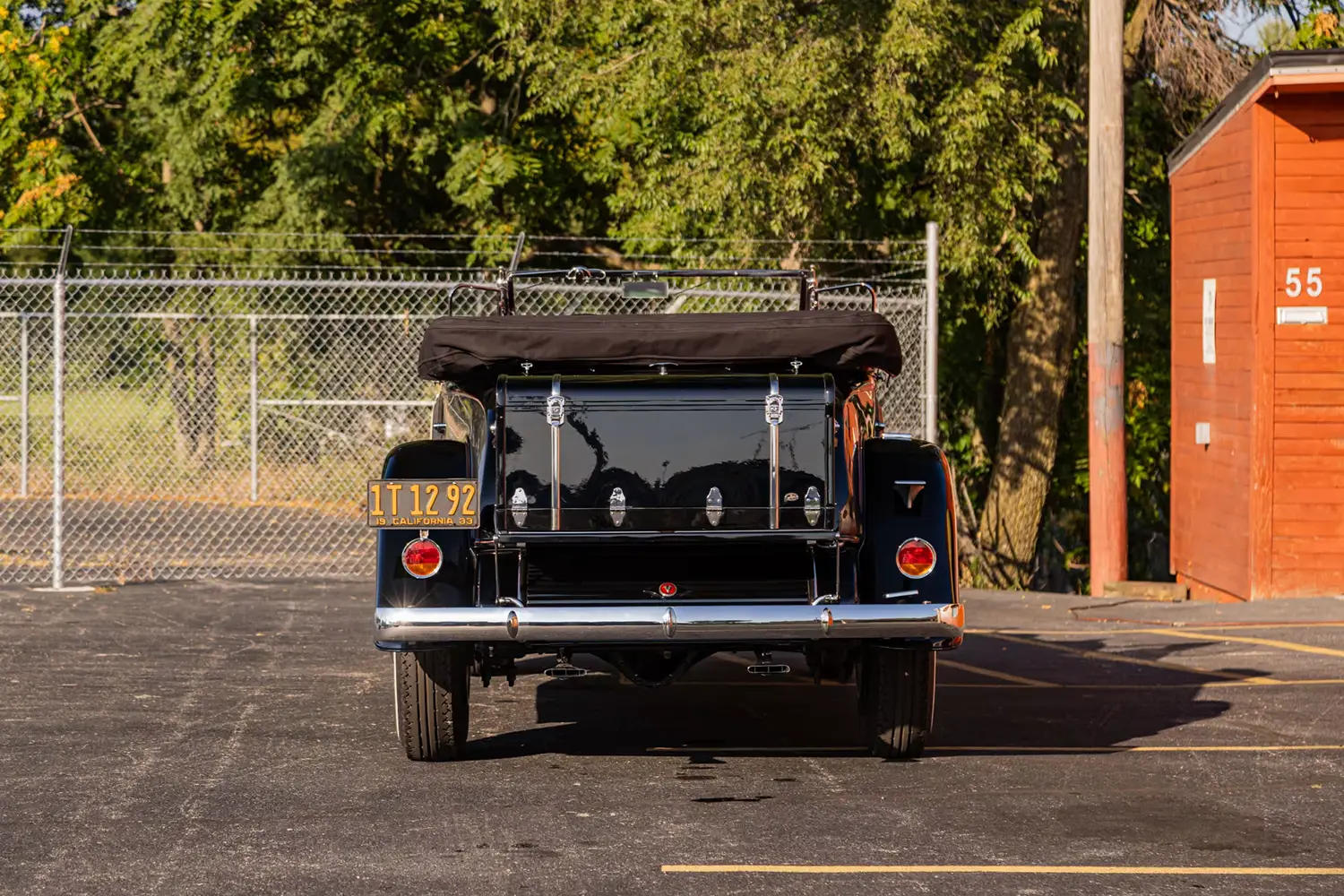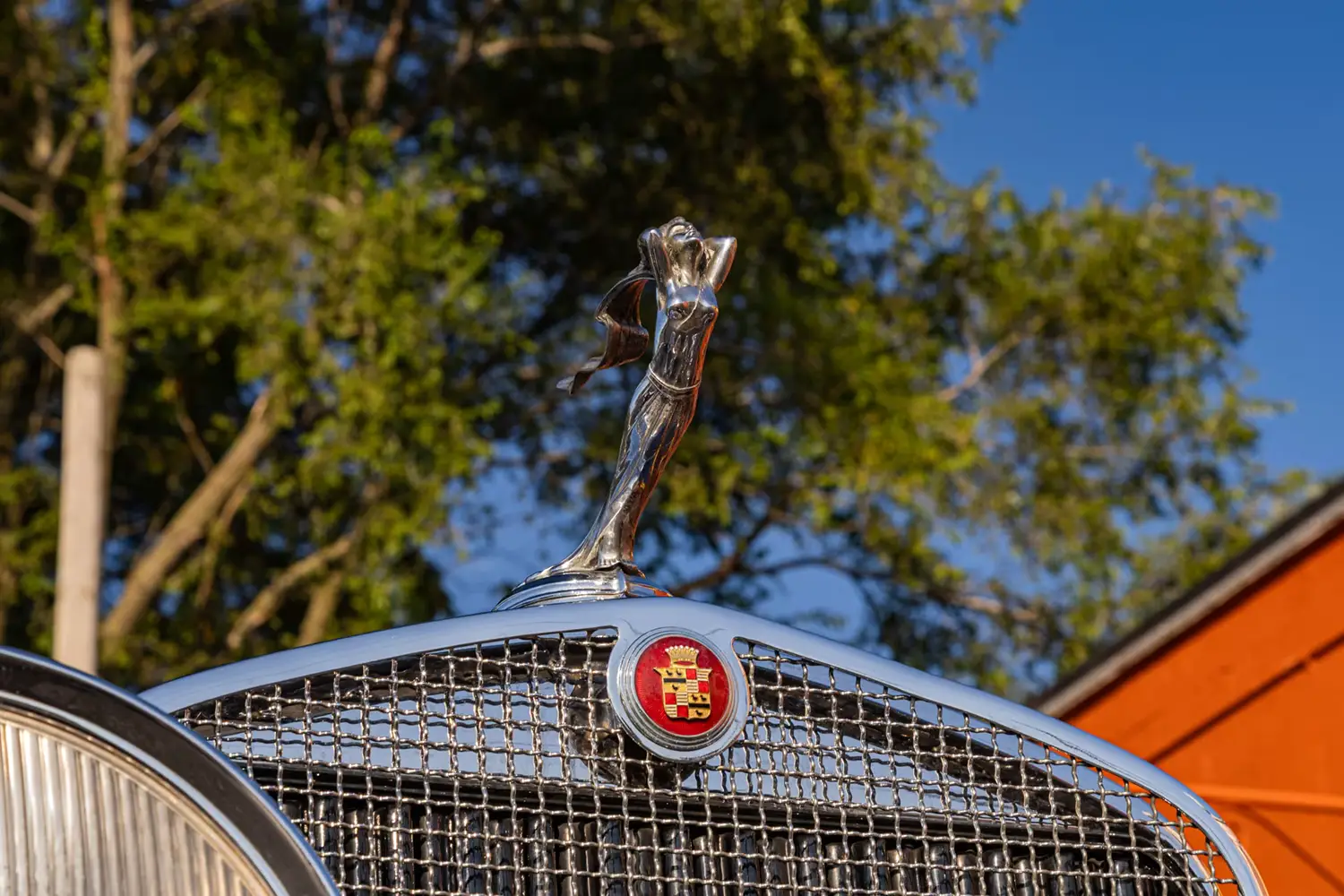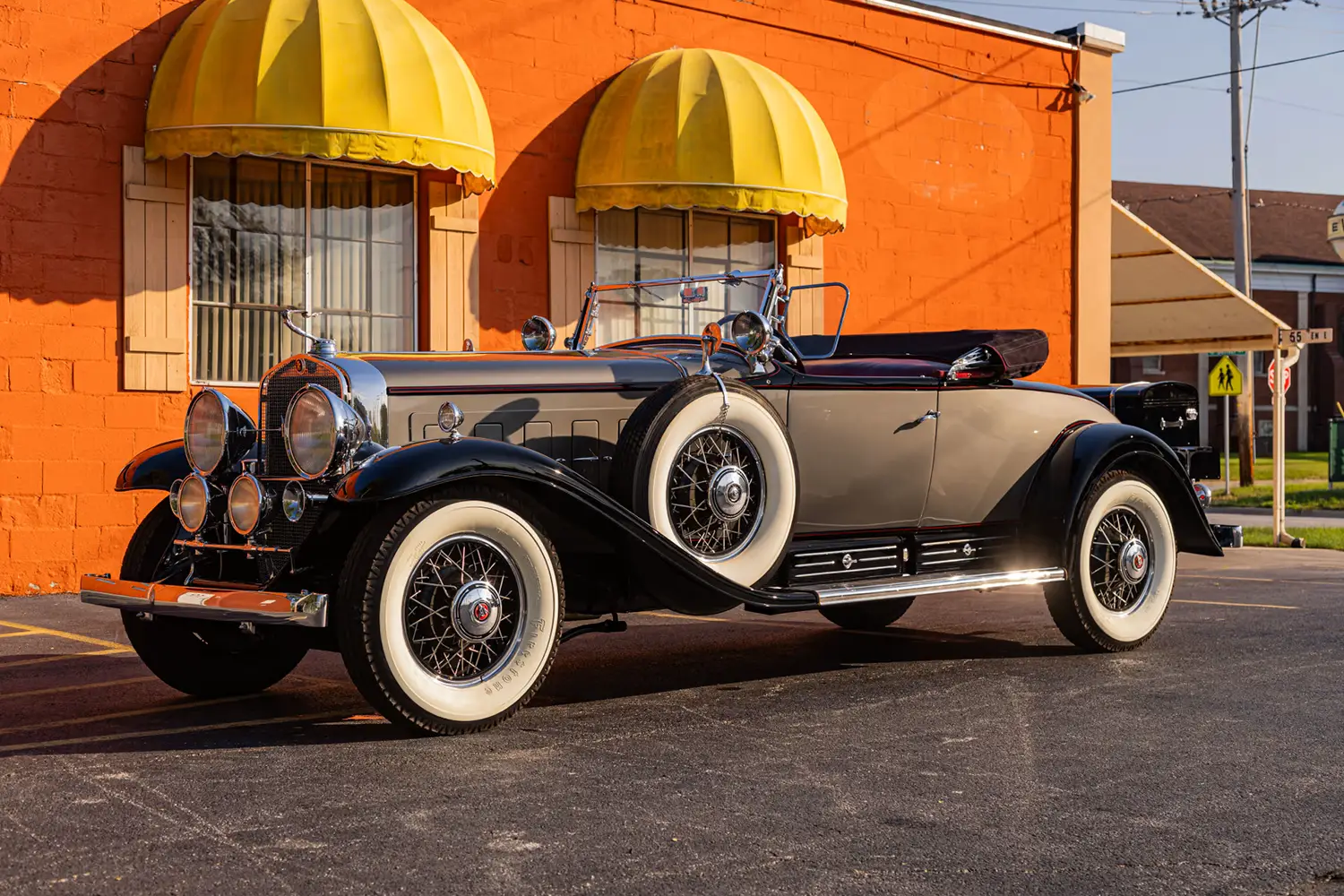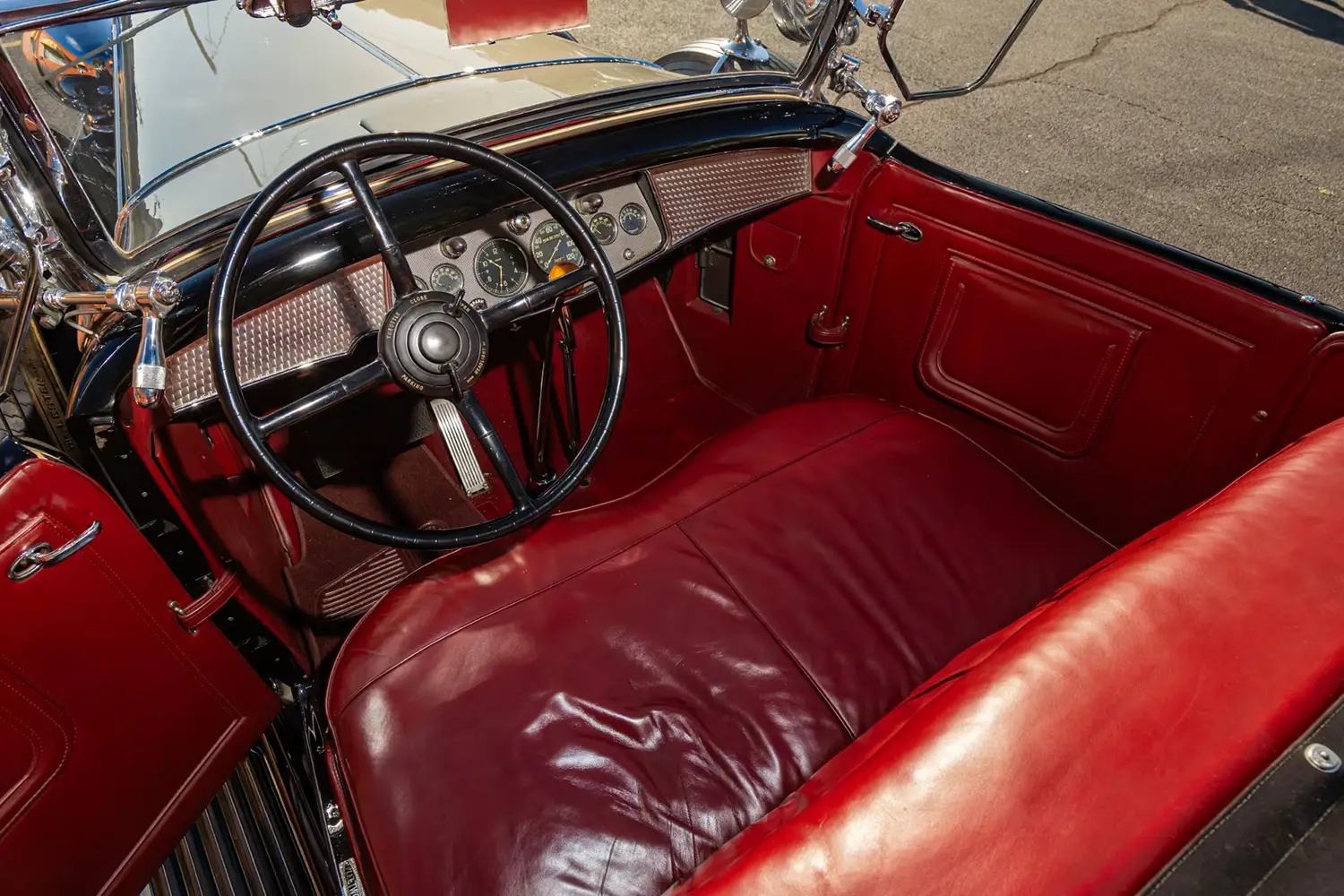
The 1930 Cadillac V-16 Roadster stands as a legendary icon from the Classic Era. Its introduction at the 1930 New York Auto Show stunned the entire fine-car market. This groundbreaking V-16 instantly propelled Cadillac to the top of the luxury hierarchy. Unlike earlier multi-cylinder designs, Cadillac’s V-16 was the first true 16-cylinder engine. It was built from scratch under great secrecy. This specific example beautifully represents the sporting elegance of the Jazz Age. It features a custom-built roadster body on its original chassis.
Engineering Innovation: The V-16 Engine Design
The creation of the V-16 engine was led by Owen Milton Nacker. His team designed an engine that was both narrow and highly refined. They used a 45-degree cylinder bank angle and an overhead valve design. This configuration allowed for external manifolds, making the engine compartment easily accessible. Cadillac’s V-16 was the first engine styled for aesthetics. It featured extensively polished aluminum and porcelain finishes. The massive, well-balanced forged crankshaft reduced vibration significantly. Special innovations like five-point engine mounts also minimized operational harshness.
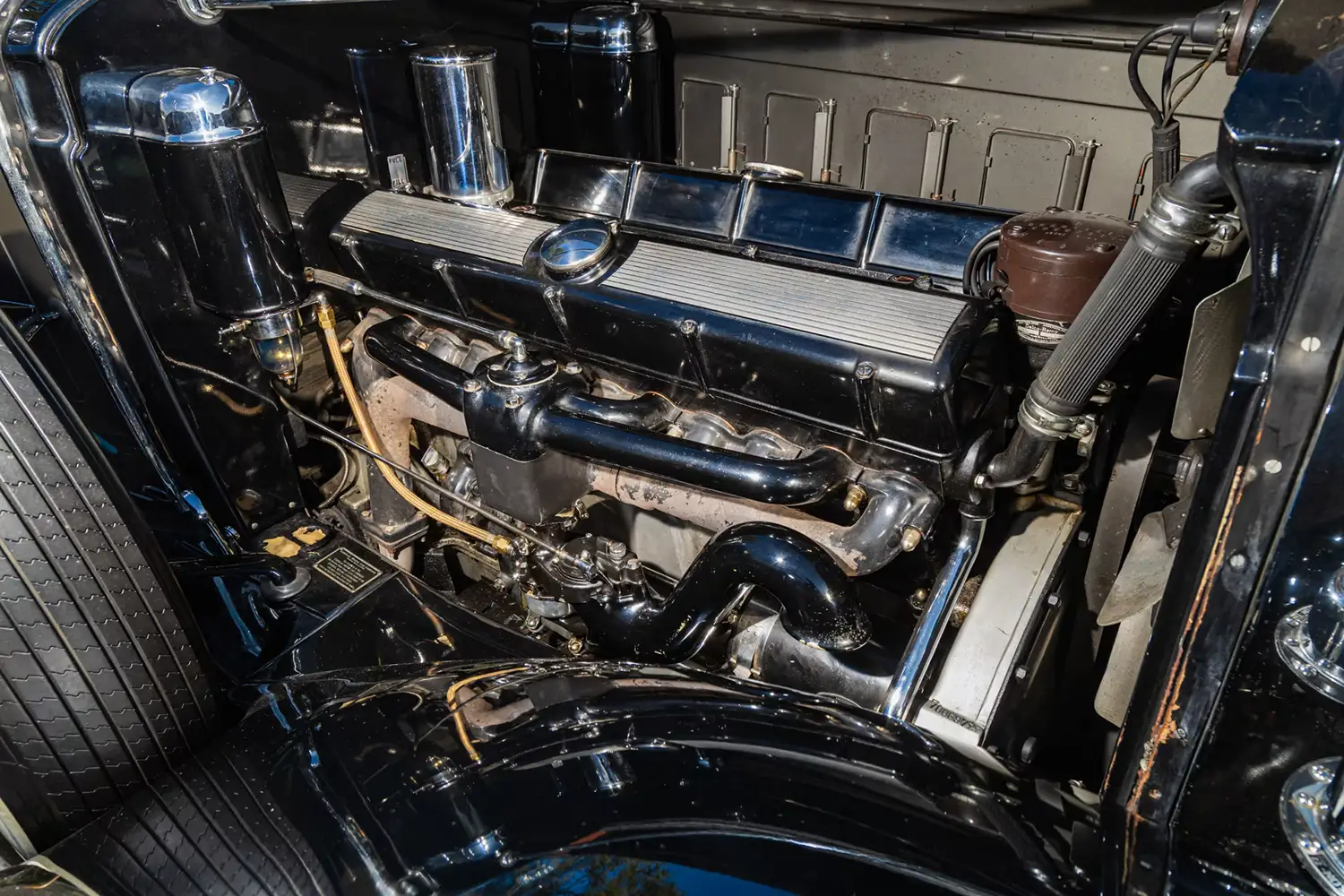
Styling and Construction: The Roadster Body
This V-16 initially left the factory as a seven-passenger sedan. After a collector acquired it in 1986, the original body was found to be beyond restoration. The owner retained essential original components. These parts included the original firewall, cowl, hood, and fenders. A new roadster body was meticulously constructed for the car. Builders used drawings and patterns from an actual Fleetwood roadster for accuracy. The result is a flowing, two-tone gray and black exterior combination. It features a black soft top for protection. The design exemplifies the sporting elegance of the era.
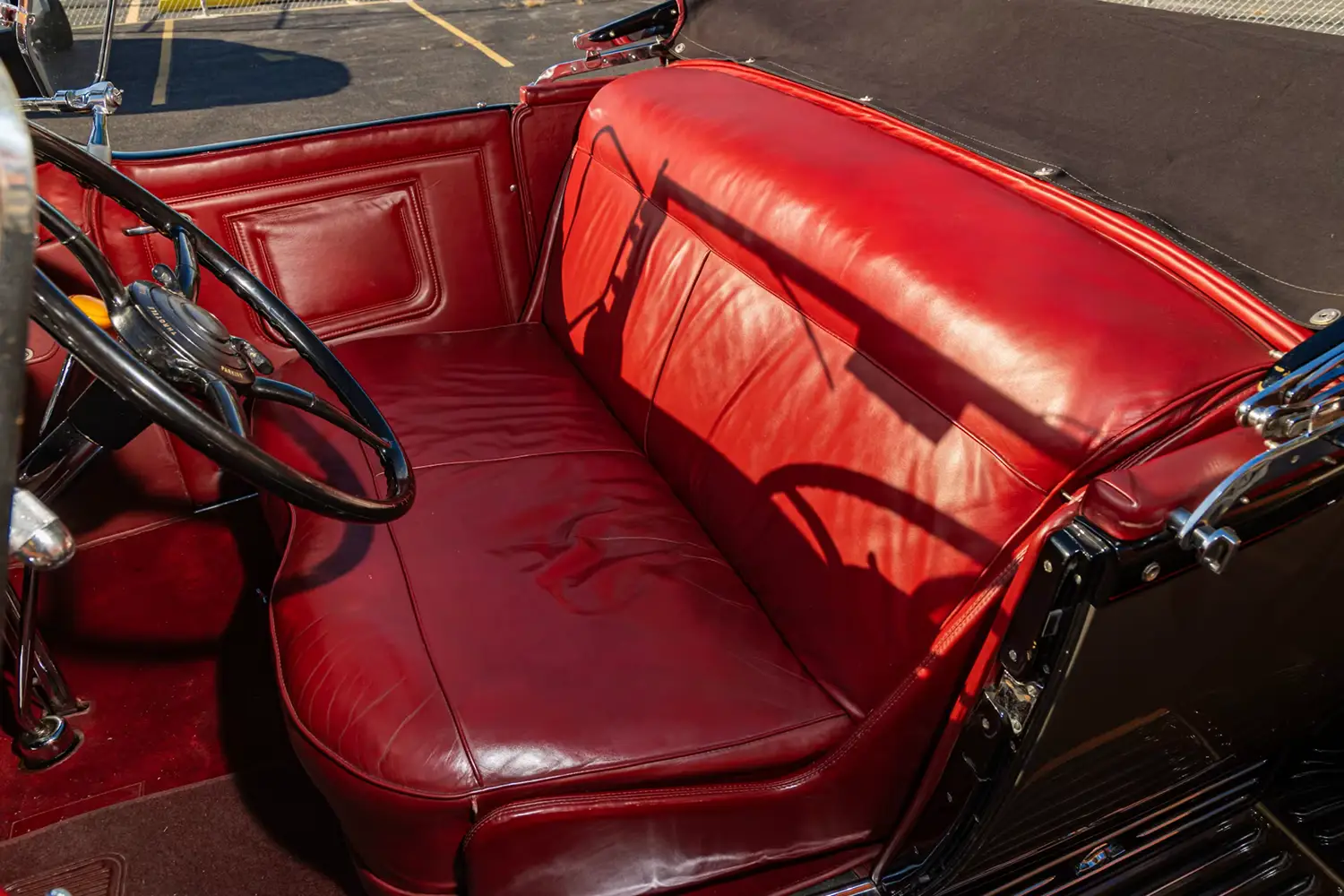
Interior: Red Upholstery and Jaeger Gauges
Stepping inside reveals a richly appointed compartment. The interior is finished in striking red upholstery. A large front bench seat provides classic comfort for the occupants. The dashboard features period-correct Jaeger gauges. These instruments monitor the V-16’s vital signs with precision. The interior is complemented by V-16 badges. This subtly reminds occupants of the mechanical marvel beneath the hood.
Exterior Details and Accessories
The elegance of the 1930 Cadillac V-16 Roadster extends to its period accessories. The car features beautiful chrome bumpers and exterior trim. A Flowing Goddess mascot sits proudly atop the radiator grille. Additional equipment includes dual spotlights and classic wind wings. A golf bag door speaks to the leisure activities of the time. The car is equipped with a rear luggage rack and trunk. Dual side-mounted spare wheels complete the sophisticated profile. Wire wheels and 1930s-style wide whitewall tires enhance the classic look.
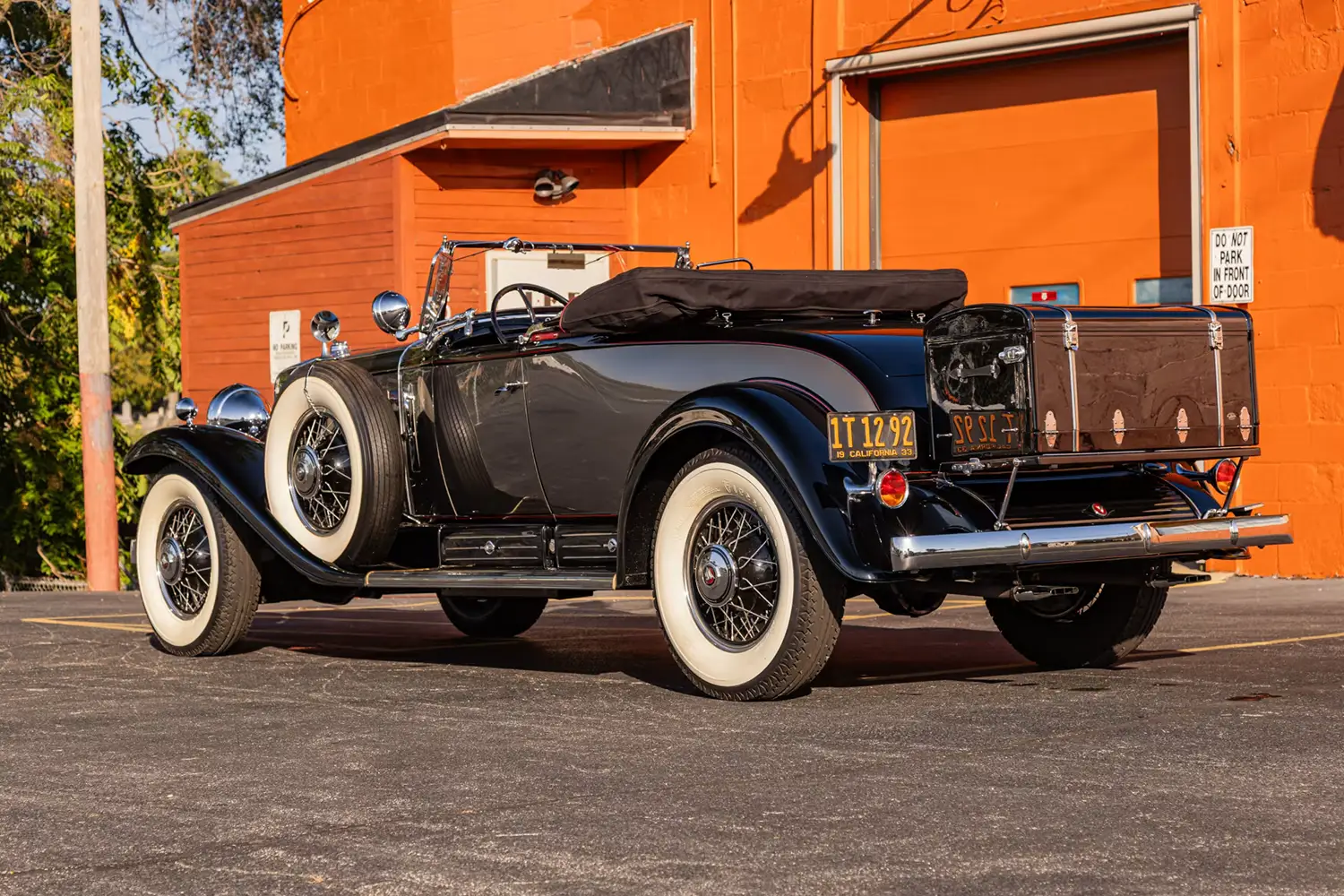
Power and Performance: The Mighty 452 CI V-16
The heart of this automotive achievement is the 452 cubic-inch V-16 engine. Cadillac officially rated this engine at 175 horsepower. However, period estimates suggested it produced more actual power. The engine was designed to deliver exceptional smoothness and low-end grunt. It produced 320 lb-ft of peak torque between just 1,200 and 1,500 RPM. Power is managed by a 3-speed manual transmission. This combination offers effortless performance suitable for grand touring. The V-16 engine’s sixteen evenly spaced firing intervals provided its renowned smooth operation.
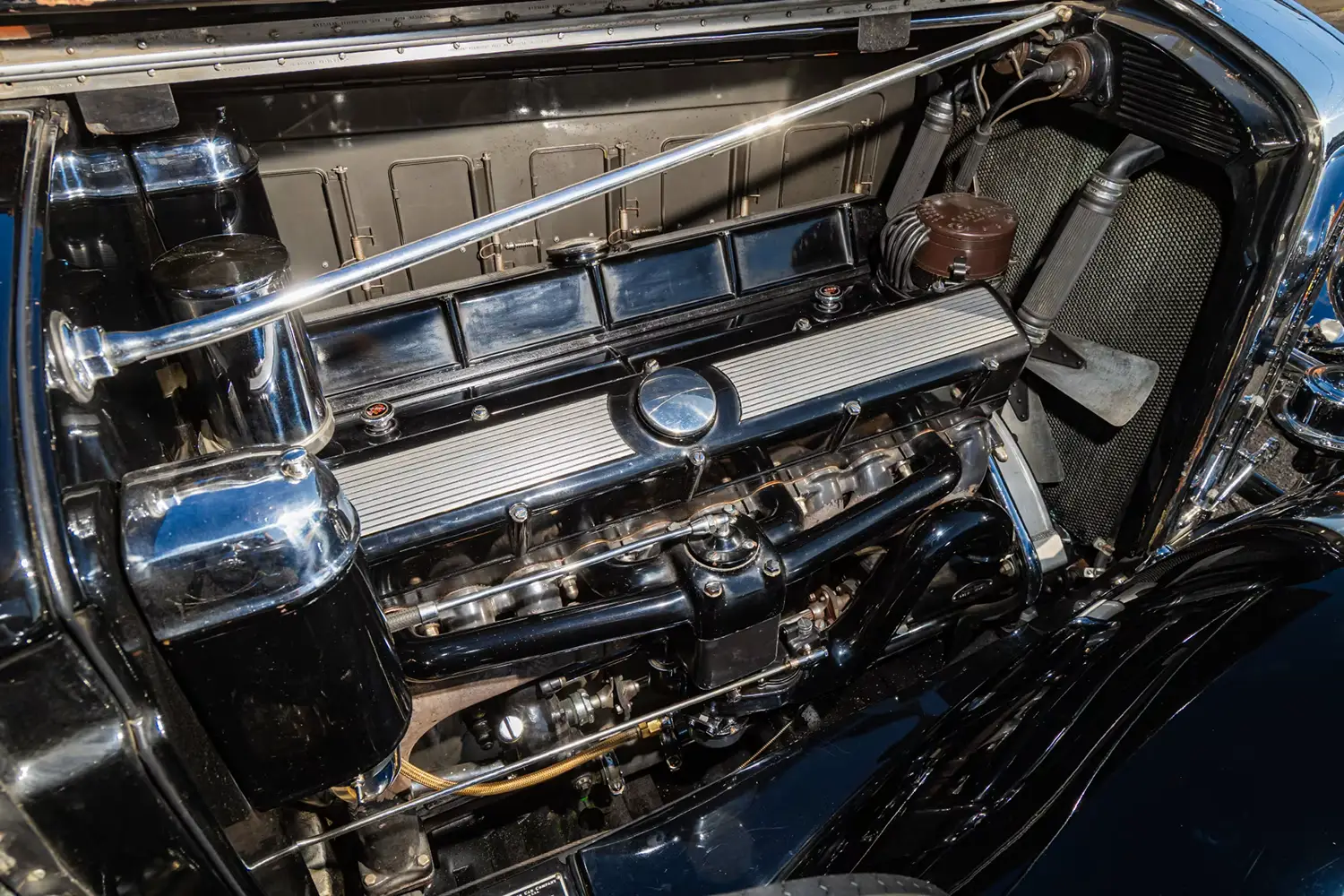
Final Summary of this Cadillac V-16
This meticulously presented 1930 Cadillac V-16 Roadster perfectly embodies the peak of pre-war luxury. It features the historically significant, scratch-built 452 CI V-16 engine. Although originally a sedan, the custom roadster body was accurately constructed. It retains key original components and exhibits stunning period styling. With its two-tone finish, red interior, and numerous period accessories, this V-16 is a remarkable machine. It represents one of the crowning achievements of the 1925-1948 Classic Era.

Disclaimer: Content on this site is for informational and entertainment purposes only. Details, analyses, and opinions reflect current trends and personal views, not professional or financial advice. Always verify information with official sources before making any decisions.
Source: mecum.com
